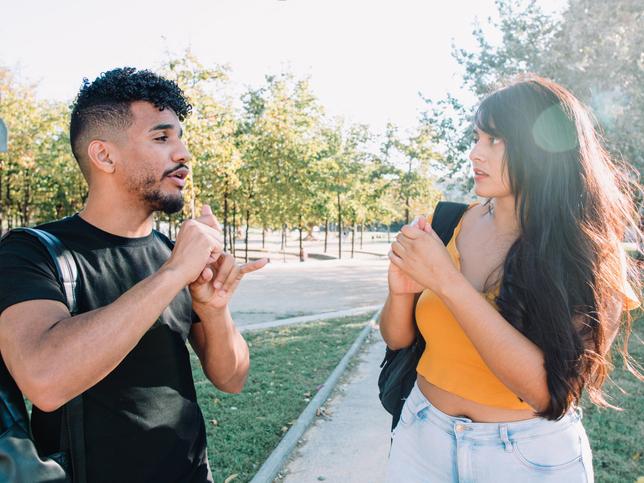
What can universities do to attract and support students with disabilities?
You may also like
Popular resources
At a training session on learning methodologies in higher education, my colleague asked the panellist how to accommodate students with disabilities or special needs. From the back row, I could hear senior lecturers murmuring about the same issue. My eavesdropping led me to conclude that they still encountered issues when teaching students with disabilities. And the fact that educators in Indonesia are not fully prepared to support students with disabilities is troubling.
In 2020, less than 10 per cent of students with disabilities in Indonesia successfully graduated with a high school diploma and over 30 per cent did not complete their primary education. Looking at the low number of students with disabilities who continue on to higher education, it is unsurprising that we are unprepared to support them, considering our interaction with them in the classroom is limited. Consequently, this reality is reflected in the lack of urgency to provide knowledge and skills to accommodate students with disabilities in higher education.
So, why are so few students with disabilities making their way into higher education? The answer to such a question is diverse and complex. Discriminatory policies against students with disabilities, explicit or implicit, could explain the unequal opportunities in higher education. Economic factors, such as high tuition fees, may be another reason why students with disabilities are unable to continue their education. Students with disabilities may also find the university learning system daunting, as facilities and study resources are mostly tailored for non-disabled people.
Given the conditions mentioned above, how can universities increase enrolment of and support for students with disabilities in their respective institutions?
Construct a culture of inclusivity
Higher education institutions must promote openness, inclusivity and equality in their learning environments. If educators still hold on to arcane views that disabilities must be corrected to allow those with disabilities to fit into society, those championed values will remain empty promises. Inclusivity principles must centre on evolving our perspectives and behaviours to empower marginalised groups.
Universities must continuously promote diversity and inclusivity through awareness programmes, training and other activities that promote inclusivity as a basic norm on campus. This culture is paramount to implementing university policies that are fair, non-discriminatory and affirmative (if necessary), as is training educators to develop the skills and competence to teach students with disabilities.
Assessment of inclusive awareness such as through the self-assessment inclusive scale (SAIS) and other frameworks can help higher education leaders understand how inclusive their campus is. Compulsory disability awareness training for educators and staff should follow. In addition, holding a disability awareness day event can spread awareness among campus students.
Use campus roadshows to attract students with disabilities
In Indonesia, high schools often invite alumni back to promote their university campuses and talk about their experiences in an effort to attract prospective students. Campuses can also promote their institutions by visiting special-needs and inclusive schools to attract students with disabilities to their campuses. These campus roadshows must reach a wider network of special-needs schools and education institutions to introduce students with disabilities to diverse higher education opportunities.
Other ways to inspire students with disabilities to enrol is by having a motivational speaker give a speech and to collaborate with disabilities organisations and charities to improve the roadshows. After the roadshows, you can put together a list of interested students with disabilities and invite them to your campus, to sit in on lectures or to spend a day as a college student.
- Resource collection: Routes to improving disability support in higher education
- Make universities disability-inclusive: co-creation, workloads and promotion processes
- I’m a disabled student – this is what I worry about when applying to your university
Create institution-specific policies for students with disabilities
A vibrant campus community, student benefits and diverse post-graduation career pathways could motivate students with disabilities to pursue tertiary study. In addition, special policies to improve affordability by diversifying tuition financing schemes for students with disabilities, such as through tuition discounts, affirmative action and merit scholarships, could also be beneficial. Furthermore, supportive job-matching and placement programmes for students with disabilities after graduation will help them enter the workforce.
Build a disability-friendly campus
“Can I use my assistive canes or wheelchairs in and around campus buildings?” “Are there Braille books or audiobooks available in the libraries?” “Can my professors communicate in sign language?” These are common questions students with disabilities ask when deciding whether to continue their education.
It’s important that campuses accommodate the needs of students with disabilities by providing adequate facilities and resources, such as accessible building entrances and ramps, adequate signage and accessible literature materials for disabilities (Braille and audio text). Implementing universal design principles and inclusive learning resources is integral to attracting more students with disabilities and supporting their success in higher education.
In line with these efforts, universities must also involve students with disabilities in designing a disability-friendly campus. This can take several stages of planning. The first phase involves assessing the needs of students with disabilities. Listen to all the discussions, feedback and input from students with disabilities so that all design decisions represent their needs. Second, communicate progress effectively to students with disabilities to promote transparency. Third, ask students with disabilities to test the design to ensure adherence to disability-friendly design. While these steps may encourage innovations in assistive technologies that can be used to create a comfortable learning environment for students with disabilities, they also reflect what is necessary for democratic participation on an inclusive campus.
Finally, universities would benefit from an initiative proposed by Universitas Negeri Surabaya (UNESA) to create a disability inclusion metric (UNESA DIMETRIC) that evaluates and ranks higher education institutions according to indicators including leadership, special policies on disability inclusion, collaboration with disability organisations, and facilities and infrastructure. Hopefully using these metrics can trigger action from many universities to ensure students with disabilities are supported on campuses.
Nurturing inclusive education in a university is not an easy task. It requires many resources and a shift in perspective. Building an inclusive culture, networking with special education institutions and making your campus disability friendly are among many concrete steps universities can take to demonstrate their commitment to helping more students with disabilities attend university.
Husnul Fitri is a lecturer in urban development studies at the University of Indonesia.
If you would like advice and insight from academics and university staff delivered direct to your inbox each week, sign up for the Campus newsletter.



